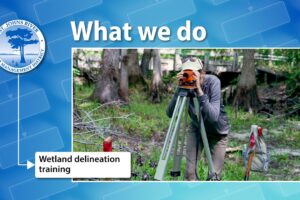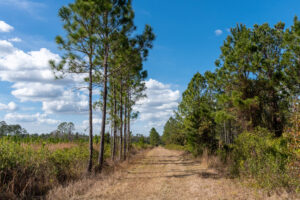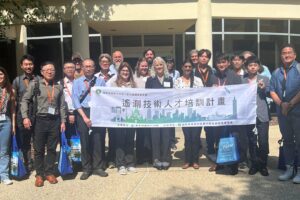District’s ongoing efforts to protect springs continues
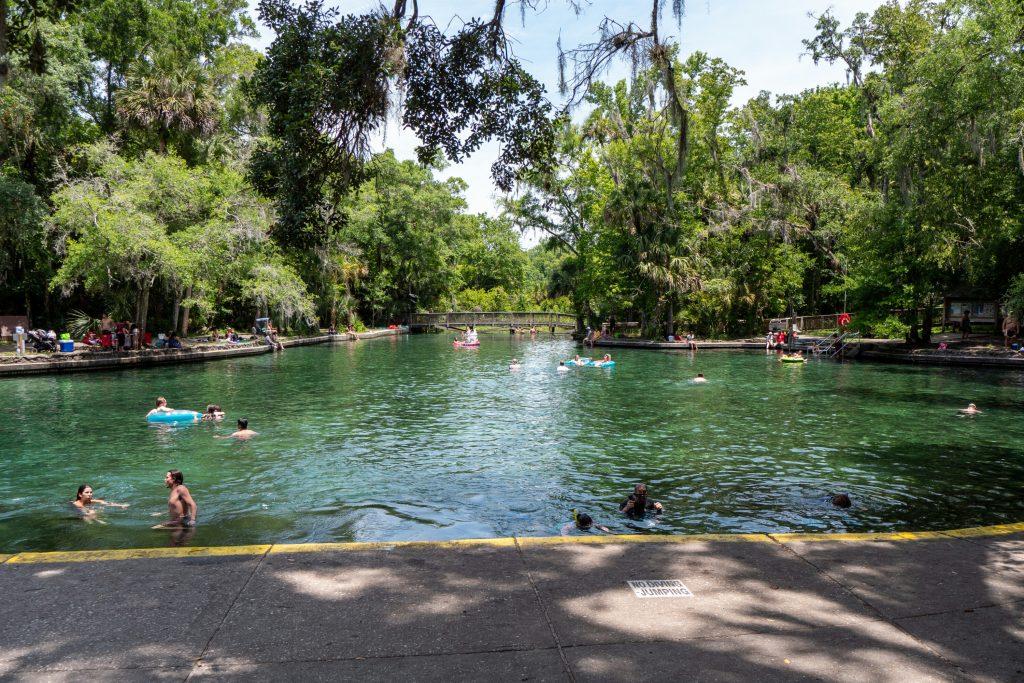
Orange County’s multi-phase, cost-share septic-to-sewer project removes 928 septic tanks near Wekiwa Springs State Park (pictured), providing direct benefits to the Wekiwa-Rock springshed.
April showers may bring May flowers, but they also bring water to our springs. As we mark Springs Protection Awareness Month, it’s important to remember that these iconic natural wonders—over 700 across the Sunshine State—have inspired artists, explorers and dreamers for thousands of years. Springs are not only central to our state’s identity but are also vital to our environment, making the need to raise awareness about their protection more important than ever.
Within the St. Johns River Water Management District, there are 148 known springs spread across the Middle St. Johns River, Upper Ocklawaha River and Lower St. Johns River strategic planning basins. These springs are more than just scenic spots; they are the “windows into the aquifer” supplying the base flow for many rivers and streams along with habitat for wildlife and fish.
Cammie Dewey, the District’s strategic planning basin coordinator for the Middle St. Johns River Basin, is no stranger to the importance of springs. Her planning basin, located in east-central Florida, is home to seven designated Outstanding Florida Springs: Rock, Wekiwa, Silver Glen, Alexander, DeLeon, Volusia Blue and Gemini springs.
“Septic-to-sewer projects are a great way to protect our springs,” Dewey says. “Old septic systems contribute nutrients to groundwater, which can potentially impact nearby springs. By converting to sewer systems, the wastewater is treated—and can even reuse it as another water source. These steps help keep our springs healthy, so future generations can enjoy them too.”
Many septic-to-sewer conversion projects, along with other initiatives to improve spring health, have been made possible through the District’s cost-share programs. Since 2014, these programs have invested nearly $72 million in 173 projects dedicated to enhancing spring health. When combined with contributions from the Florida Department of Environmental Protection (DEP) and local governments, the total investment in these efforts reaches $381.4 million.
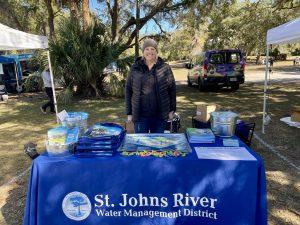
District Education and Outreach Coordinator Ali Pressel takes part in the annual Manatee Festival, held each January at Blue Spring State Park in Volusia County. This is just one of many events she attends throughout the year to raise awareness about the importance of springs and promote the District’s mission.
These projects have made a real and lasting impact, providing over 55 million gallons per day (mgd) of alternative water supply, creating 19 million gallons (MG) of additional storage capacity, and conserving 4.8 mgd of water. Additionally, water quality has improved, with a reduction of 422,349 pounds of nitrogen and 154,578 pounds of phosphorus per year in priority spring systems. These improvements not only safeguard the springs but also protect local drinking water supplies, enhance recreational opportunities, and support the health of the surrounding ecosystems.
A key tool in raising awareness about springs is education and outreach. Staff members, including Ali Pressel, the District’s Education and Outreach Coordinator, have participated in numerous events throughout the District and have been able to highlight initiatives and projects aimed at protecting springs.
“Springs are a place where people swim, paddle and connect with nature, so there’s already a strong personal interest in how they’re protected,” Pressel says. “Our goal is to help people understand how their enjoyment of these spaces ties into the work being done to keep them healthy and accessible long-term.”
As we celebrate Springs Protection Awareness Month, let’s remember that the health of our springs impacts our communities, wildlife, and ecosystems. By investing in their protection, supporting education and outreach and taking action to improve these resources, we can help ensure future generations enjoy Florida’s springs. Together, we can make a lasting difference in preserving these natural wonders. Learn more here: www.sjrwmd.com/springs.


